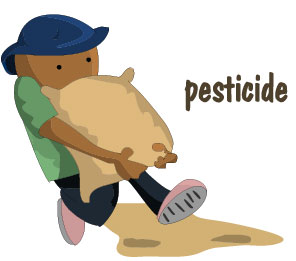- Land Pollution
Sources of land pollution
Below are some sources of solid and semi-solid pollutants:
 Agricultural sources: These include waste matter produced by crops, animal manure, and farm residues. It also includes chemical leftover of all pesticides, fertilizers, and insecticides used for agricultural activities.
Agricultural sources: These include waste matter produced by crops, animal manure, and farm residues. It also includes chemical leftover of all pesticides, fertilizers, and insecticides used for agricultural activities.
Ashes: The residual matter that remains after solid fuels is burned. When waste is burned in incinerators, two types of ashes are produced. Bottom ash is the debris from burnt metal and glass waste. Bottom ash is not bio-degradable. The second type of ash is called fly ash. That is the ash that is trapped by filters in the chimney of the incinerators. It is known to be very toxic (poisonous). Every four trucks of waste burnt produce about one truck of ashes that end up in the landfill too. Ashes easily leak into the soil and water tables, causing land and water pollution.
Mining sources: This includes piles of coal refuse and heaps of slag and underground debris. Mining and forestry activities that clear the land surfaces (clearcutting) and use ‘skid trails’ often leave the land unrestored. The surface is exposed to erosion, which destroys the quality of the land. Additionally, iron and other chemicals such as copper, mercury, and lead from mining practices leach into the soil, polluting it and leaving it exposed to water bodies as well.
Industrial sources: These include paints, chemicals, metals and aluminum, plastics, and so on that are produces in the process of manufacturing goods.
Sewage Treatment: This is waste left over after sewage has been treated, biomass sludge, and settled solids. Some of these are sent directly to landfills whiles other treatment plants burn them to generate electricity. Both end up polluting the environment.
Garbage or waste: These include household or municipal waste such as glass, metal, cloth, plastic, wood, paper, and so on. Some of these can decay, and others cannot. They are usually collected and sent to landfills where the pollution action begins.
Construction sources: These include waste like debris, wood, metals, and plastics that are produced from construction activities.
Deforestation: This is when trees are cut down for economic purposes, mining, farming, and construction. In forest areas, trees absorb and reflect about 20% of the intense heat from the sun, protecting and preserving its surface soils. Cutting down trees means that the land is exposed to direct sunlight and rain, resulting in soil erosions, desertification, and land degradation.
Chemical And Nuclear Plants: These include chemical waste from chemical industries that are disposed of in landfills.
Oil Refineries: When crude oil is refined into usable petrol, gas, or diesel, some by-products end up as waste.
